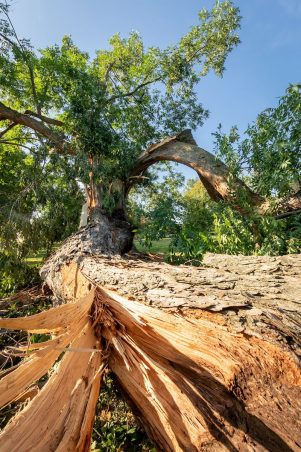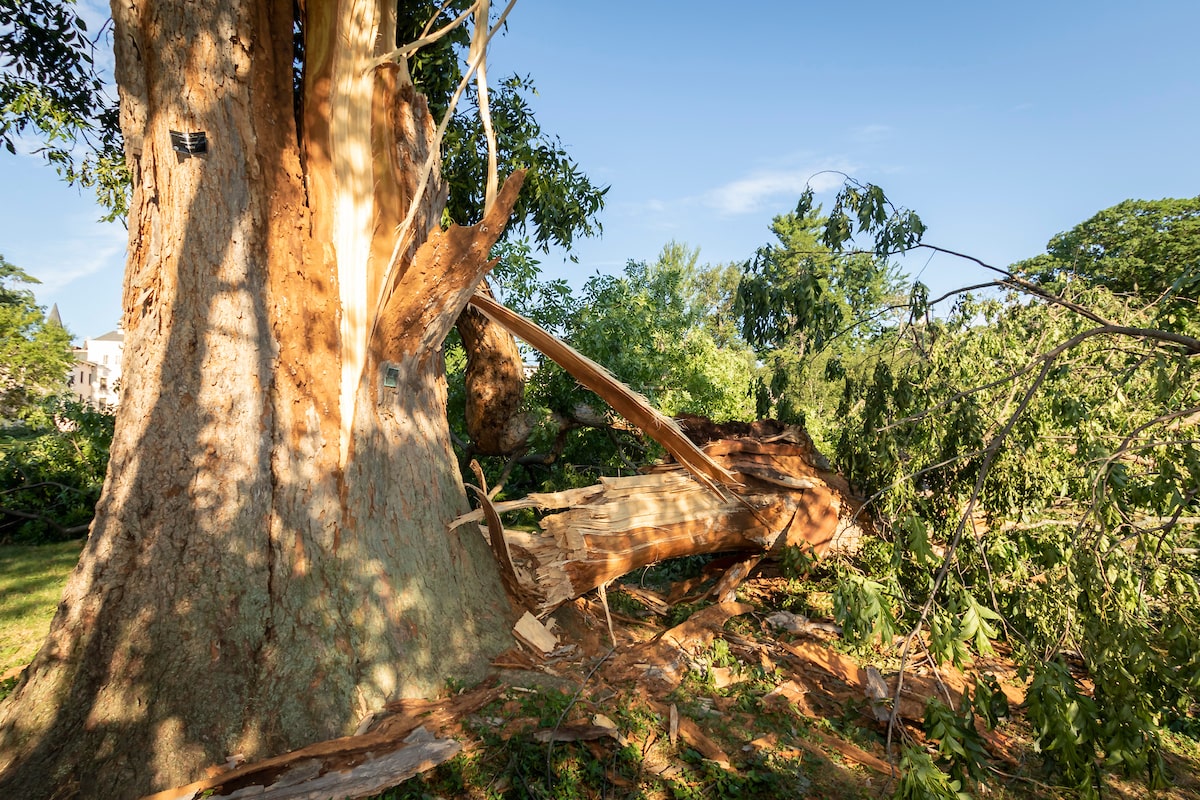By Robin Stanley and Brenda Kestenbaum
Tropical Storm Isaias made history when it barreled through the region Aug. 4. It also erased some history.
Several trees on the Institute of Living (IOL) grounds, dating to the 1860s, were destroyed — including a famed pecan tree.
“The pecan is one of our notable trees,” said Annetta Caplinger, Vice President of Clinical Operations at the IOL. “It is special and loved by those on campus. It was a grand old dame.”
Rare or unusually large tree species make up the IOL grounds, ever since they were redesigned by Frederick Law Olmsted and his associate, Jacob Weidenmann. Olmsted, a noted landscape architect, also helped design Central Park, the Boston park system and the U.S. Capitol grounds in Washington.
 The pecan tree, in the middle of the central lawn, was one of two in Connecticut and was a New England champion (largest of its species) for 30 years until a lightning strike a caused significant damage a decade ago. There is evidence to suggest that the pecan tree predates Olmsted.
The pecan tree, in the middle of the central lawn, was one of two in Connecticut and was a New England champion (largest of its species) for 30 years until a lightning strike a caused significant damage a decade ago. There is evidence to suggest that the pecan tree predates Olmsted.
“Pecans are rare up here because they are borderline hardy, they don’t normally survive around here,” said Mike Mathews, coordinator of operations for the IOL. Mathews added that the pecan tree was not expected to survive the lightning strike but eventually began to fill out.
Besides the pecan, other New England champions on the grounds include the Ginkgo, which is also one of the biggest in the United States, the bur oak and the Japanese Zelkova. The Ginkgo, said Mathews, can live 1,000 to 2,000 years.
The storm may go down as one of the most severe in Connecticut’s history, leaving more than 700,000 customers across the state without power. Only Hurricane Irene and an October snowstorm, both in 2011, caused more outages.
Hartford Hospital also saw some tree damage but not as significant as the IOL, according to Barry Kriesberg, regional vice president for operations. Kriesberg described the dedication of facilities staff members in their cleanup efforts as “exceptional,” with some arriving in the middle of the night to ensure the hospital was accessible.
Nick Marziale, director of engineering and facilities, Hartford Hospital and IOL, was responsible for the coordination of cleanup after the storm and described it as a “war zone” with fallen leaves, limbs and debris.
“Our goal was to make sure that as day broke, our employees, patients and visitors arrived to a clean and safe hospital,” Marziale said.
Marziale said a memory of the pecan tree will be preserved in some way. In the past, bowls and benches have been made from the wood of fallen trees.
“You hate to see them go down, but most people understand the cycle of life with trees,” said Mathews. “Most of these trees have suffered some damage from past storms or lightning strikes, but they’ve overcome, and they wear their war wounds well.”
The IOL offers walking tours of the grounds during regular business hours (9 am to 5 pm). Visitors can go to the Guard Gate at the Retreat Avenue entrance to obtain a self-guided walking tour map, or download it here.
The Hartford HealthCare Behavioral Health Network is now scheduling virtual-health visits for mental health and addiction services. Call your provider for details. New patients can schedule a virtual visit by calling 1.888.984.2408.
For more information on the programs and services available through the Behavioral Health Network, click here.
Not feeling well? Call your healthcare provider for guidance and try to avoid going directly to an emergency department or urgent care center, as this could increase the chances of the disease spreading.
Click here to schedule a virtual visit with a Hartford HealthCare-GoHealth Urgent Care provider.
Stay with Hartford HealthCare for everything you need to know about the coronavirus threat. Click here for information updated daily.
Stay fit. Stay happy. Stay healthy. And keep on top of COVID-19 with Hartford HealthCare’s daily text alerts. Subscribe by texting MoreLife to 31996.

